Discover 35 hidden attractions, cool sights, and unusual things to do in Greenville (United States). Don't miss out on these must-see attractions: Bon Secours Wellness Arena, Fluor Field at the West End, and Greenville Zoo. Also, be sure to include Conestee Nature Preserve in your itinerary.
Below, you can find the list of the most amazing places you should visit in Greenville (South Carolina).
Table of Contents
Bon Secours Wellness Arena

Arena in Greenville, South Carolina. Bon Secours Wellness Arena is a multi-purpose arena in Greenville, South Carolina. The arena serves as the home of the Greenville Swamp Rabbits of the ECHL.[1]
Address: 650 N Academy St, 29601-2246 Greenville (Central Greenville)
Fluor Field at the West End
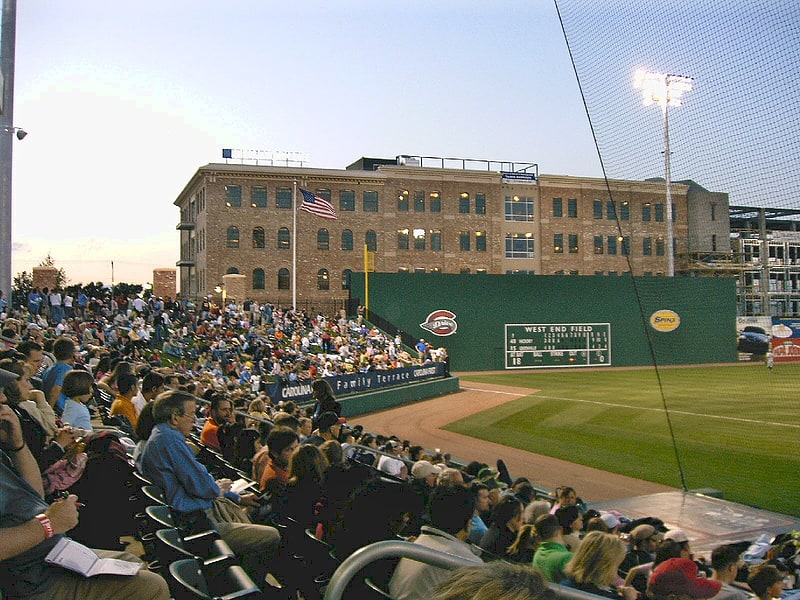
Stadium in Greenville, South Carolina. Fluor Field at the West End is a 6,700-seat baseball-only stadium in Greenville, South Carolina that opened on April 6, 2006. Designed by architectural firm DLR Group, it was built as a new home of the Greenville Drive baseball team, the High-A East affiliate of the Boston Red Sox.[2]
Address: Main Street and Augusta Road, 29601 Greenville
Greenville Zoo
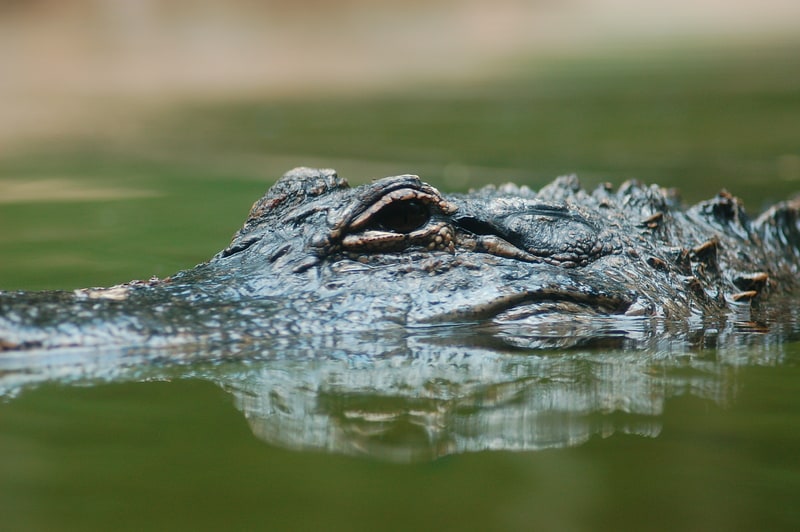
Compact, year-round wildlife menagerie. The Greenville Zoo is a zoo in Greenville, South Carolina, United States. The zoo opened in 1960, and is located at 150 Cleveland Park Drive, near Interstate 385, on a 14-acre site within Cleveland Park.
The zoo's official website states: "A typical visit would last from an hour to an hour and 30 minutes." The zoo is next to Cleveland Park, which contains picnic tables throughout the site, and offers bicycle and walking paths, tennis and volleyball courts, playgrounds for children, and several shelters available by reservation. The zoo is open daily throughout the year except for Thanksgiving, Christmas, Christmas Eve and New Year's Day.
The Greenville Zoo is accredited by the Association of Zoos and Aquariums (AZA).[3]
Address: 150 Cleveland Park Dr, 29601-3147 Greenville (Central Greenville)
Conestee Nature Preserve
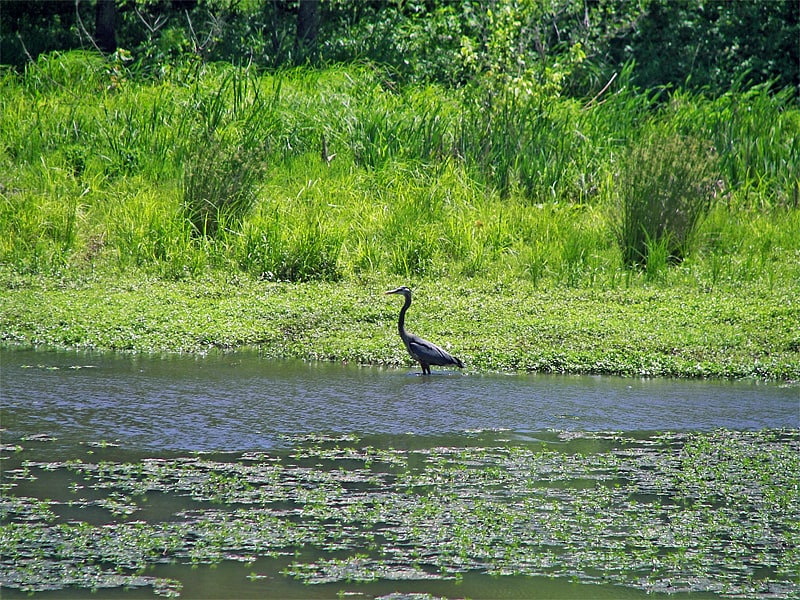
Nature preserve in Greenville County, South Carolina. Conestee Nature Preserve, formerly Lake Conestee Nature Preserve/Park, opened in 2006, is a 400-acre preserve along three miles of the Reedy River in Conestee, South Carolina, with 13 miles of trails, more than 6 miles of them paved and 1 mile of boardwalk. The Preserve contains both hardwood and evergreen forest, extensive wetlands, and a rich diversity of reptiles, mammals, and birds. At least 223 bird species have been reported, and the National Audubon Society has designated the park as an Important Bird Area of Global Significance. In 2016 the state of South Carolina made the privately owned facility a wildlife sanctuary.
Lake Conestee was created when the Reedy River was dammed at the Conestee Mill in about 1892. At its largest extent, the lake covered about 130 acres (53 ha), but years of upstream industrial waste and discharge filled about 90 percent of the lake with sediment so toxic that the lake was classified as a Superfund site. In 2000 the Conestee Foundation, a 501(c)(3) conservation organization, was formed to lead the revitalization of the lake as a wetlands through the development of the nature preserve, and the foundation used settlement funds from a June 1996 Colonial Pipeline spill to purchase the lake and the dam. Once safety studies of the brownfield were complete, it was determined that no harm would result if the toxic sediment were left in place.
In December 2016, inspectors from the state Department of Health and Environmental Control rated Conestee Dam, which is not keyed into the bedrock, in poor condition due to deterioration of mortar and water seepage.[4]
Reedy River Falls
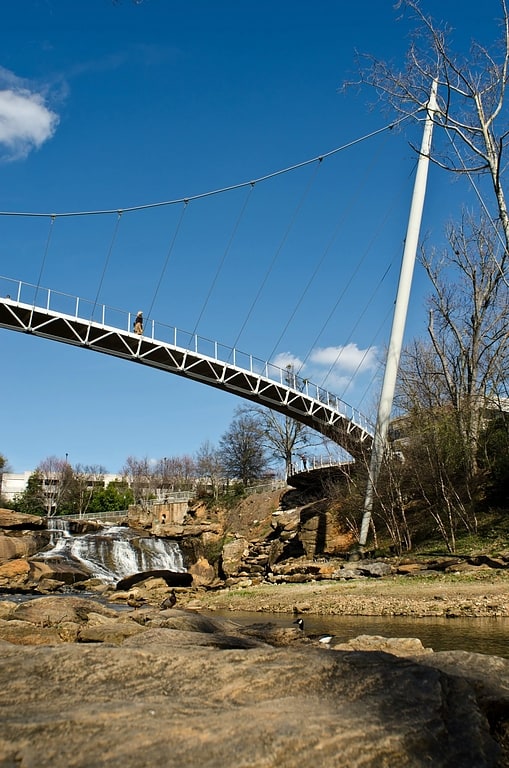
Reedy River Falls Historic Park and Greenway, now known as Falls Park, runs along both banks of Reedy River from the falls to Church Street, in Greenville, South Carolina.[5]
Cleveland Park

Park in Greenville, South Carolina. Cleveland Park is the largest park in Greenville, South Carolina, much of its more than 120 acres being greenway along Richland Creek and the Reedy River near the city's "most elegant neighborhoods."
On December 31, 1924, with encouragement from Greenville Park Commission chairman John Alexander McPherson, prominent Greenvillean William Choice Cleveland donated a crescent-shaped 110 acres on the southeast side of town to be used as a park and playground, a recreational area he hoped would complement his new housing development, Cleveland Forest, and would include an equestrian park and paddocks where residents could board their horses. (Stables managed by private owners existed adjacent to the park until they were demolished in 2014.) In 1925, the city of Greenville created two baseball fields, a horse ring, and a playground, and the park officially opened on January 1, 1926.
By 1928, during the administration of Mayor Richard Watson, when a $110,000 bond issue to develop the park was approved, the park was surveyed at 126 acres. Land around the river was boggy and prone to flooding, a deficiency partially remedied during the Great Depression when the WPA channelized the river bed, greatly improving drainage.
In its earliest years the park included a Girl Scout meeting place and a nine-hole public golf course, built and abandoned in the 1930s. A swimming pool and skating rink were added in 1929; but in 1964, during the Civil Rights Movement, the whites-only pool was closed to prevent it from being integrated. First a sea lion exhibit replaced the pool, then a rose garden; finally in 1988, tennis courts replaced both garden and skating rink.
In 1930, the Greenville Garden Club began to renovate a Civil-War era rock quarry into the Rock Quarry Garden. The garden won a Better Homes and Gardens award in 1932; but by the 1960s, it was neglected and overgrown. Another renovation project revitalized the garden in the 1980s, and in the 21st century, the Rock Quarry Garden became a popular wedding and reception venue.
In the 21st century, the park, now adjacent to the Greenville Zoo, included a softball field, volleyball and tennis courts, several playgrounds, a Vietnam Veterans Memorial, and eight picnic shelters. The Swamp Rabbit Trail runs through the park, and it also includes the Fernwood Nature Trail, the Ramona Graham Fitness Trail, and the Troop 19 Trail. A distinctive landmark is the memorial to Rudolf Anderson, a Greenville native shot down over Cuba in October 1962, the only American casualty of the Cuban Missile Crisis. The Anderson memorial features an F-86 Sabre and panels explaining Anderson's life and mission.[6]
Address: Cleveland Park Dr, 29607 Greenville (South Side)
Falls Park on the Reedy
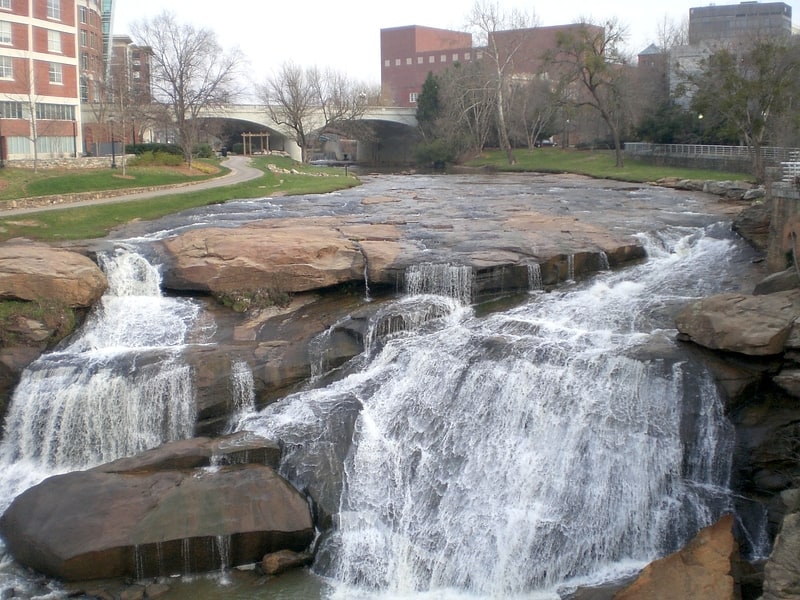
Park in Greenville, South Carolina. Falls Park on the Reedy is a 32-acre park adjacent to downtown Greenville, South Carolina in the historic West End district. Considered the birthplace of Greenville, the park was founded in 1967 when the Carolina Foothills Garden Club reclaimed 26 acres of land that had been previously used by textile mills. Renovation accelerated in the late 1990s under Mayor Knox H. White, prompting the formation of the Falls Park Endowment, a private charity supporting ongoing development. Each summer the park is home to the Upstate Shakespeare Festival.
The park's most striking feature is a unique pedestrian bridge that curves around a waterfall on the Reedy River. Named the Liberty Bridge at Falls Park on the Reedy, the 355-foot (108 m) long suspension bridge is supported by cables on only one side, giving an unobstructed view of the falls. It was designed by Boston firm Rosales + Partners with German firm Schlaich Bergermann & Partner as structural engineers and completed in the fall of 2004. It was awarded the Arthur G. Hayden medal for innovative design in 2005.
Near the bridge, the Main Street entrance to the park is graced by Bryan Hunt's 16 ft (4.9 m). bronze sculpture Fall Lake Falls and contains a restaurant and other visitor amenities at the new Falls Park Center.
The park also features a collection of public gardens and a wall from the original 1776 grist mill built on the site.[7]
Address: 601 S Main St, 29601-2504 Greenville
Liberty Bridge
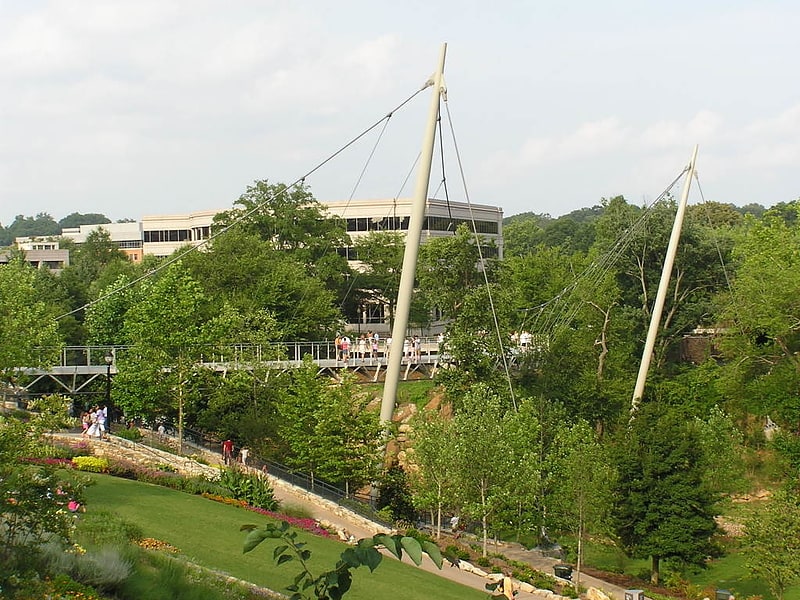
Pedestrian bridge. The Liberty Bridge at Falls Park on the Reedy is a pedestrian bridge in Greenville, South Carolina.[8]
Address: 601 S Main St, 29601 Greenville
Greenville County Museum of Art

Museum in Greenville, South Carolina. The Greenville County Museum of Art is an art museum located in Greenville, South Carolina. Its collections focus mainly on American art, and its holdings include works by Andrew Wyeth, Josef Albers, Jasper Johns, Andy Warhol, Romare Bearden, Jacob Lawrence, Ronnie Landfield, Helen Turner, Mary Tannahill, Eric Fischl, Marylyn Dintenfass, and Leon Golub. Southern American and South Carolina-based artists, such as Henrietta Johnston, are also represented.[9]
Address: 420 College St, 29601-2017 Greenville (Central Greenville)
Upcountry History Museum
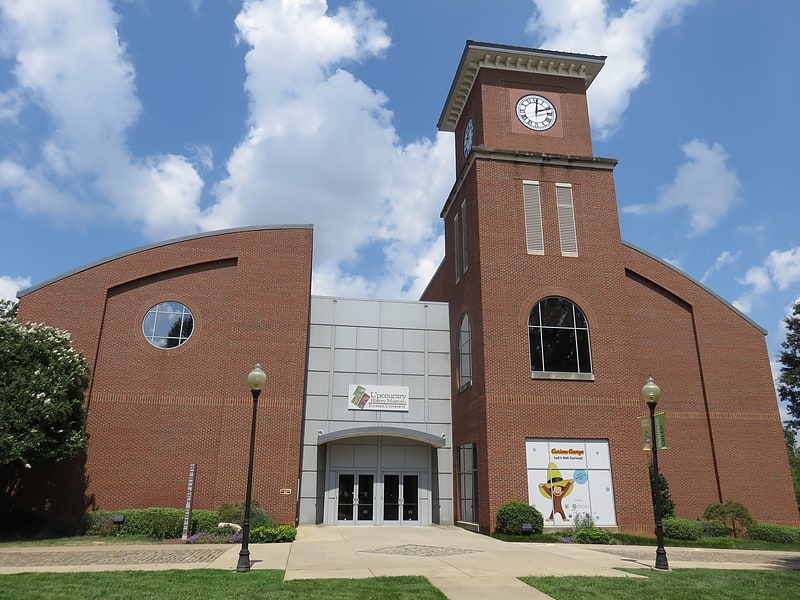
Museum in Greenville, South Carolina. The Upcountry History Museum is a history museum in Greenville, South Carolina that displays the regional history of fifteen upstate South Carolina counties from the early 18th century to the present. Exhibits designed by Christopher Chadbourne and Associates emphasize technology rather than artifacts "to engage the senses, ignite the imagination and transport visitors back in time."
The museum is located on Greenville's Heritage Green with The Children's Museum, the Greenville County Art Museum, the satellite Museum & Gallery of Bob Jones University, the Greenville County Main Library, and the Greenville Little Theatre. The museum opened in September 2007. It is operated by Furman University.
In 2015, the Upcountry History Museum was named a Smithsonian affiliate. Its first Smithsonian exhibit was Searching for the Seventies: The DOCUMERICA Photography Project.[10]
Address: 540 Buncombe St, 29601-1906 Greenville (Central Greenville)
Peace Center
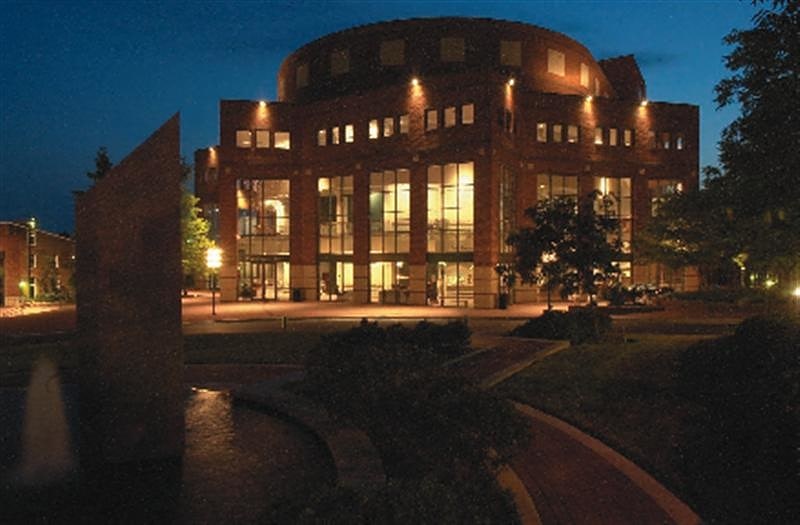
Performing arts center in Greenville, South Carolina. The Peace Center is a performing arts center located in Greenville, South Carolina. It is composed of a concert hall, theater, and amphitheatre. Located adjacent to Falls Park, the center hosts over 300 events each year, including classical music, Broadway shows, and appearances by popular artists such as David Copperfield.[11]
Address: Greenville, 300 S Main St, Greenville, SC 29601-2606
Christ Church
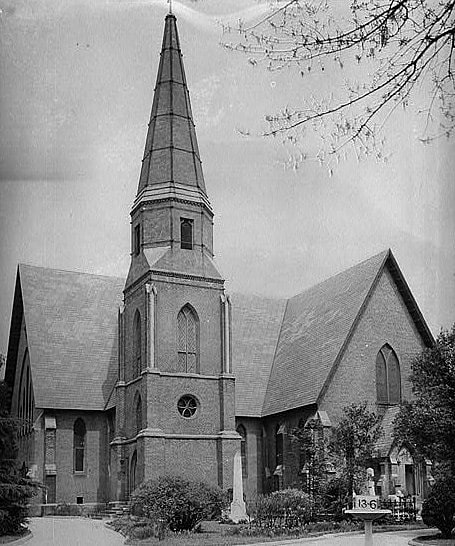
Episcopal church in Greenville, South Carolina. Christ Church is an Episcopal church in Greenville, South Carolina, United States. which was consecrated in 1854. The church and its courtyard are listed on the National Register of Historic Places as Christ Church and Churchyard. It is the oldest organized religious body and the oldest church building remaining in Greenville.[12]
Address: 10 N Church St, 29601 Greenville (Central Greenville)
Paris Mountain State Park

State park in Greenville County, South Carolina. Paris Mountain State Park is a state park in the U.S. state of South Carolina, located five miles north of Greenville. Activities available in the 1,540-acre park include hiking, biking, swimming and picnicking. The 13-acre Lake Placid offers swimming and fishing. Canoes, kayaks, and pedal boats are seasonally available for rental; private boats are not permitted. Camping is allowed and campsites range from rustic, back country sites to paved sites with water and electricity hook-ups. The park's Civilian Conservation Corps structures, including the Camp Buckhorn lodge, are listed on the National Register of Historic Places. m.[13]
Address: 2401 State Park Rd, 29609-6743 Greenville
Wyche Pavilion
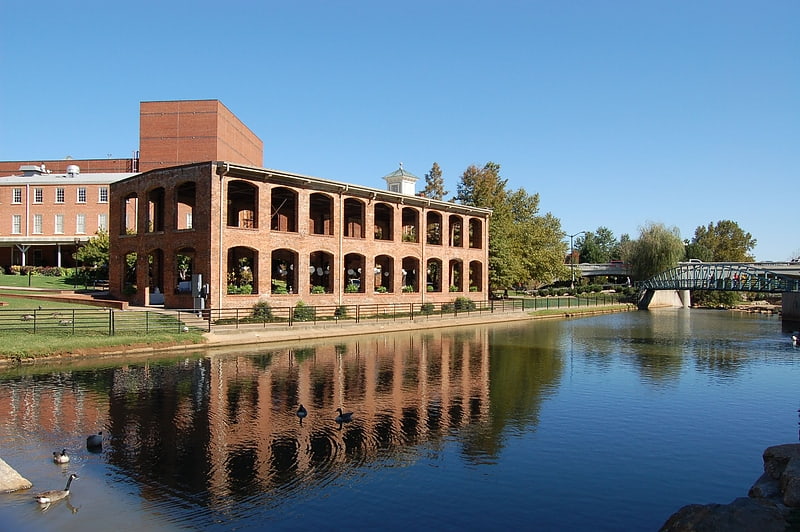
The Wyche Pavilion is the two-story, open-air shell of a historic building in downtown Greenville, South Carolina, used in the 21st century as an event venue. As part of the Reedy River Industrial District, the building was listed in the National Register of Historic Places on January 14, 1979.
The brick structure was built in 1904 by noted Greenville engineer and industrial architect Joseph Emory Sirrine (1872–1947) with large windows of the same size on both floors, a flat roof, and a cupola at its center. The building was intended as a paint shop for the adjacent Greenville Coach Factory, but with the coming of the automobile, the owners of the coach factory sold the business in 1911. In 1925, the building became the home of Duke's Mayonnaise, a successful enterprise created by Greenville resident Eugenia Thomas Slade Duke (1881–1968).
The building was virtually abandoned by 1958 and had fallen into disrepair before it was purchased in the 1980s by the Peace Center, a Greenville performing arts complex, which initially intended to restore the building. After financial constraints prevented the remodeling, the building was gutted, turned into an open-air pavilion, and named for Tommy Wyche (1926–2015) and his wife Harriet, leaders in the transformation of downtown Greenville. In 2019, following the development of Falls Park, the Peace Center proposed to install windows, doors, and HVAC equipment in order to transform the building into "a fully-functioning performance venue, featuring state of the art sound and lighting". Despite two design proposals, the second of which included a recommendation by city planners, Greenville's Design Review Board rejected the Peace Center plans by a vote of 3–2.[14]
Address: 20 Japanese Dogwood Lane, Greenville (Central Greenville)
Centre Stage

Theater in Greenville, South Carolina. Centre Stage is a year-round, 285-seat theater in downtown Greenville, South Carolina. The theater maintains a full-time staff of seven and produces between six and eight mainstage productions each year, in addition to a wide variety of other entertainment and nightlife activities. Actors, directors and other theater artists are hired both locally and regionally on an as-needed basis. Centre Stage is a constituent member of Theatre Communications Group and a member of the professional division of the Southeastern Theatre Conference.[15]
Address: 501 River St, 29601-2666 Greenville (Central Greenville)
Shoeless Joe Jackson Museum

Museum in Greenville, South Carolina. The "Shoeless" Joe Jackson Museum and Library was first opened to the public on June 21, 2008. Located across from Fluor Field in Greenville, South Carolina, the five room brick house in which Shoeless Joe Jackson lived and died in contains a few of his personal belongings and over 2,000 books related to baseball.
In 2015, the Shoeless Joe Jackson Museum formally petitioned Commissioner of Baseball Rob Manfred for Jackson's reinstatement to baseball, on grounds that Jackson had "more than served his sentence" in the 95 years since his banishment by Kenesaw Landis. Manfred denied the request after an official review. "The results of this work demonstrate to me that it is not possible now, over 95 years since those events took place and were considered by Commissioner Landis, to be certain enough of the truth to overrule Commissioner Landis' determinations," he wrote.
The museum allows members of the public to visit on Saturdays and conducts private tours during the week. While in Greenville, many visitors to the museum also visit "Shoeless" Joe Jackson's grave located in Woodlawn Memorial Park near the Bob Jones University campus. When visiting the grave, members of the public leave baseball related equipment such as baseballs, gloves, and cleats.[16]
Address: 356 Field St, 29601-3541 Greenville
Furman University Asian Garden
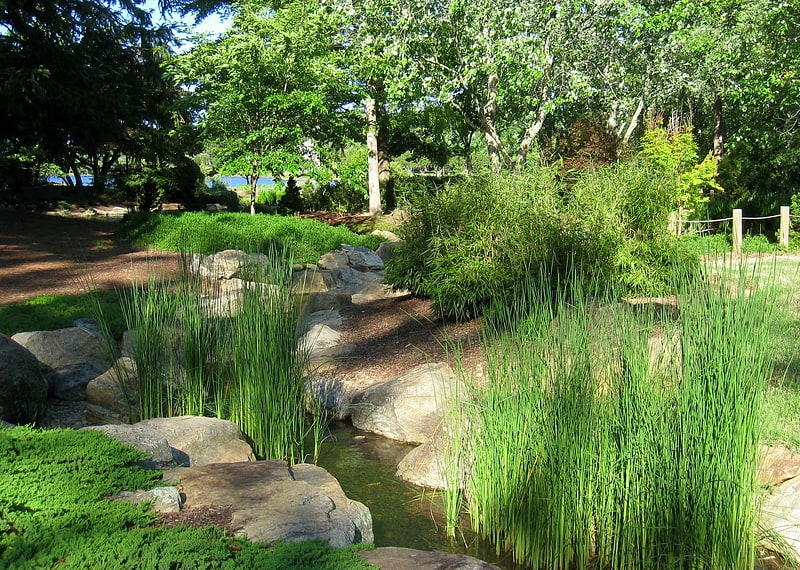
The Furman University Asian Garden is an Asian-style garden located on the campus of Furman University at 3300 Poinsett Highway, Greenville, South Carolina. It is open daily without charge.
Furman University has a long-term exchange program with Kansai Gaidai University in Hirakata, Osaka, Japan. The Japanese garden reflects this relationship, and includes a small teahouse, and a Hei-Sei-Ji temple that was originally standing in Nagoya.[17]
Address: The Playhouse at Furman University, 3300 Poinsett Highway, Greenville
Frankie's Fun Park
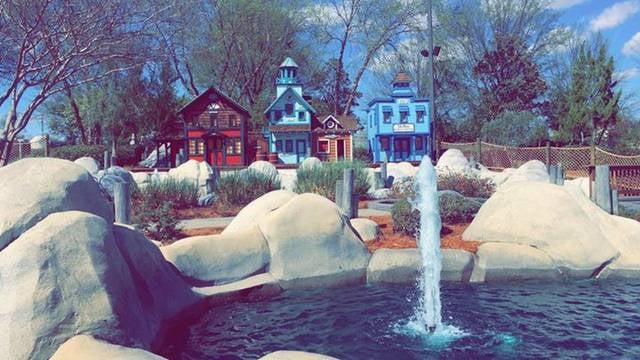
Amusement, Game and entertainment center, Arcade, Theme park, Event space, Amusement park
Address: 45 Park Woodruff Dr, 29607-5728 Greenville
Third Presbyterian Church
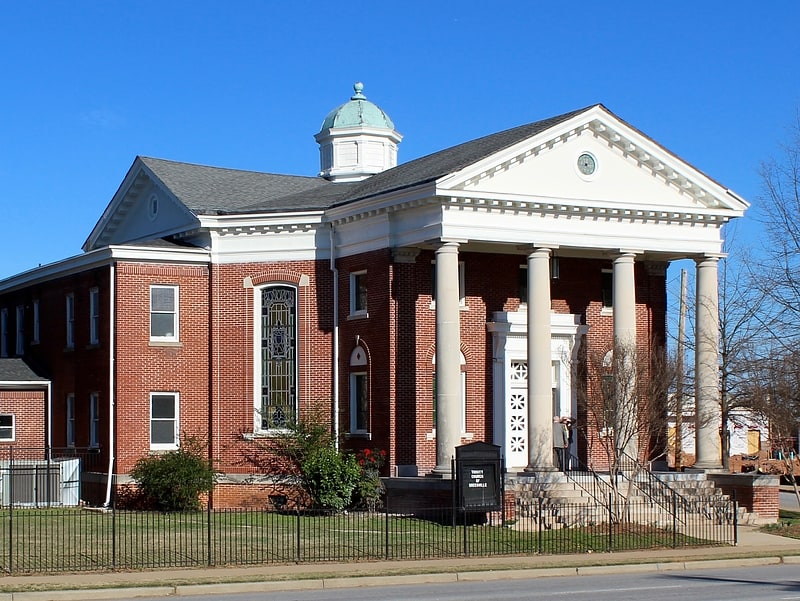
Third Presbyterian Church is a historic church in Greenville, South Carolina, restored as a place of worship by the congregation of Trinity Church of Greenville, for which the latter received a 2016 State Preservation Honor Award from the South Carolina Department of Archives and History and the Palmetto Trust for Historic Preservation.[18]
John Wesley United Methodist Church
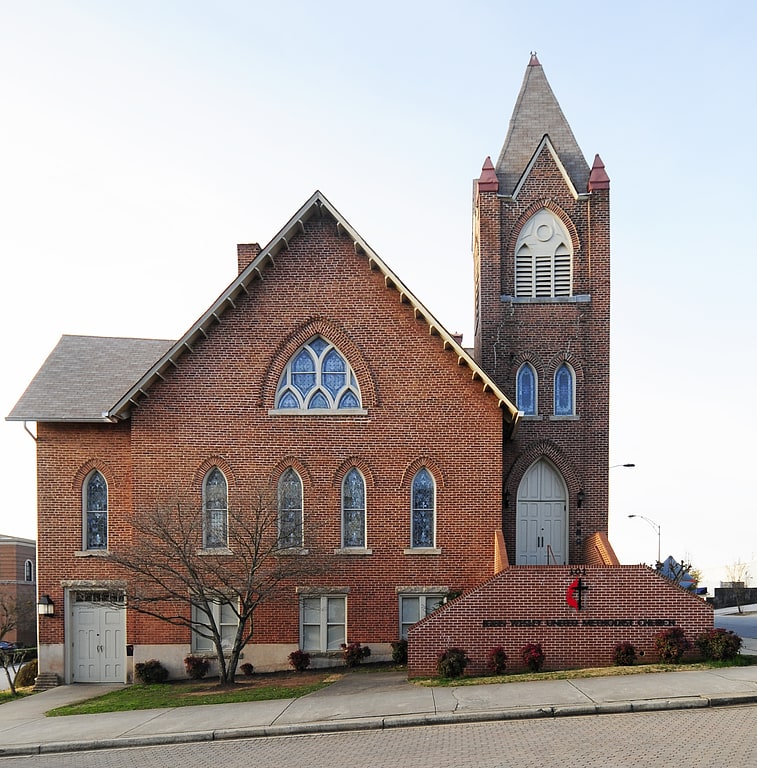
Building in Greenville. John Wesley Methodist Episcopal Church is a historic church at 101 E. Court Street in Greenville, South Carolina, United States. The church was founded in 1866 by James R. Rosemond, who was a former slave. It was originally named Silver Hill United Methodist Episcopal Church, and was renamed after John Wesley in 1902.
The current building was built in 1899 and added to the National Register in 1978.[19]
Address: 101 E Court St, 29601 Greenville (Central Greenville)
Springwood Cemetery

Cemetery in Greenville, South Carolina. Springwood Cemetery is a historic cemetery in Greenville, South Carolina, listed on the National Register of Historic Places. It is the oldest municipal cemetery in the state and has approximately 7,700 marked, and 2,600 unmarked, graves.
The first burial in what today is Springwood Cemetery occurred in July 1812, after Elizabeth Blackburn Williams (1752–1812), the mother-in-law of prominent early Greenvillian Chancellor Waddy Thompson, expressed a desire to be buried in the family garden. Many other burials occurred in the area after Thompson sold 60 acres of his property to one Francis H. McLeod in 1817. In 1829 McLeod opened the private graveyard to the public, and in 1833, he conveyed a tract of land to the city for use as a cemetery. The city acquired additional acres during the 1870s, and the last five acres of the cemetery were purchased before 1944. Presumably the cemetery was named for a spring that was once included in, or was just beyond, its boundaries.
The 200-year-old cemetery includes "a comprehensive collection of gravemarker types," including field stones, raised masonry tombs topped with stone ledgers, Victorian monoliths, and Veterans Administration markers. Eighty unknown Confederate soldiers are buried near the entrance, presumably soldiers who died of wounds or disease after being removed to one of the two Greenville buildings used for hospitals during the Civil War.
Springwood retains its rural cemetery design elements and the 1876 landscape planning of prominent New South architect G. L. Norrman. The entrance gate, designed by local architect James Lawrence and built of Indiana limestone, was completed in 1914. Just outside the Main Street entrance, in its own pocket park, is a Confederate monument that from 1891 to 1923 stood in the middle of Main Street.
The northeast corner of the cemetery, which was used as a potter's field for African Americans and indigent whites has perhaps only a dozen remaining headstones, although the area is believed to contain hundreds of graves. In 1969 the City of Greenville extended Academy Street through this section and removed the remains of approximately 250 to 275 people.
Although burials continue, no new plots have been sold since the 1970s. The city of Greenville contributes to the maintenance of the cemetery, but there is no perpetual care fund, and the graves themselves remain private property. A "Friends of Springwood Cemetery" organization was formed in 2002 to raise awareness of cemetery needs.[20]
Address: 410 N Main St, 29601-2027 Greenville (Central Greenville)
Museum & Library of Confederate History
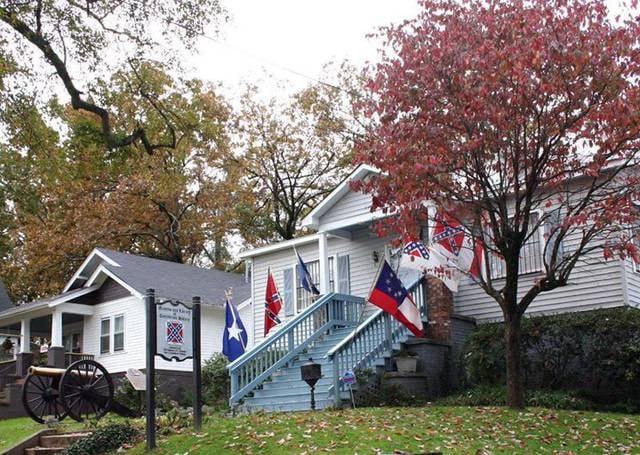
Museum, History museum
Address: 15 Boyce Ave, 29601-3109 Greenville (Central Greenville)
Allen Temple A.M.E. Church
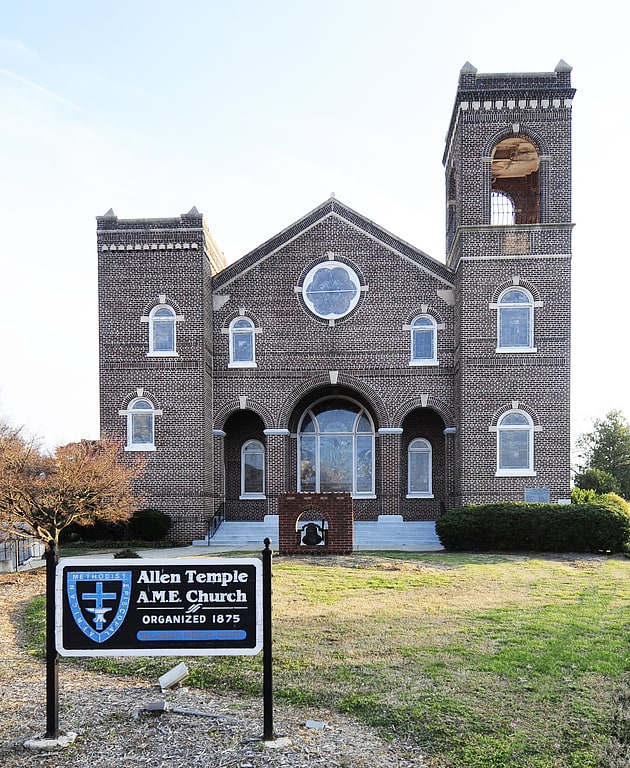
Methodist church in Greenville, South Carolina. Allen Temple A.M.E. Church is a historic church at 109 Green Avenue at the junction with S. Markley Street in Greenville, South Carolina.
It was built in 1929 in a Classical Revival style and was added to the National Register of Historic Places in 2008.[21]
Richland Cemetery
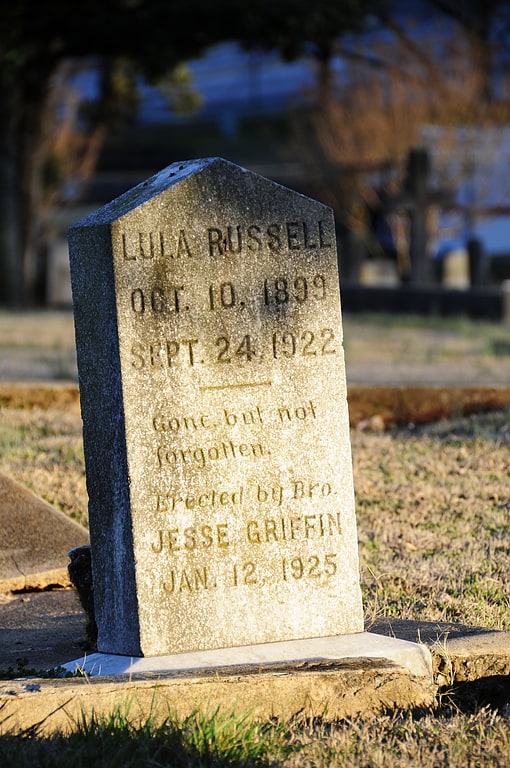
Cemetery in Greenville, South Carolina. Richland Cemetery is a historic African-American cemetery located at Greenville, South Carolina. It was established in 1884 by the City of Greenville as the first municipal "colored" cemetery. It is the final resting place for many of Greenville's most notable African-American educators, health practitioners, and community leaders. The total number of graves is estimated at over 1,400 and gravemarker types and materials range from natural stones to elaborate Victorian monuments.
It was added to the National Register of Historic Places in 2005.[22]
McDaniel Park
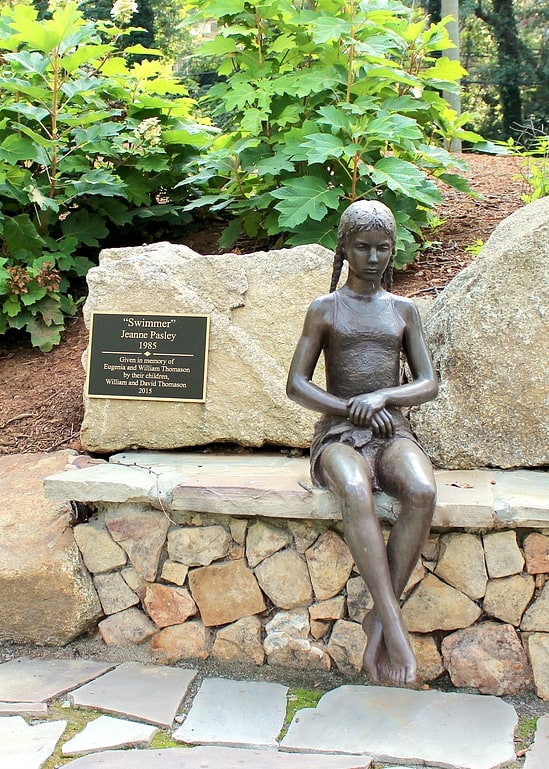
McDaniel Park is pocket park in Greenville, South Carolina, near the intersection of McDaniel Avenue and McDaniel Green, adjacent to the Rock Quarry Garden, Cleveland Park. McDaniel Park was dedicated to the Dorothy Haynsworth Garden Club in October 2015; and it features a statue, "Swimmer", by Jeanne Pasley, in memory of Eugenia and William Thomason, who died in 2013 of accidental carbon monoxide poisoning.[23]
Josiah Kilgore House

Josiah Kilgore House, now known as the Kilgore-Lewis House, is a historic home located at Greenville, South Carolina. It was built about 1838, and is a two-story, L-shaped, vernacular Palladian style dwelling on a low foundation. It features a pedimented portico supported by square posts. It has a projecting rear wing with a three-bay porch. The structure was moved to a five-acre site in McPherson Park to prevent its demolition.
The Kilgore-Lewis House serves as the headquarters for the Greenville Council of Garden Clubs, which provides tours of the house, arboretum and gardens.
It was added to the National Register of Historic Places in 1975.[24]
Cancer Survivors Park
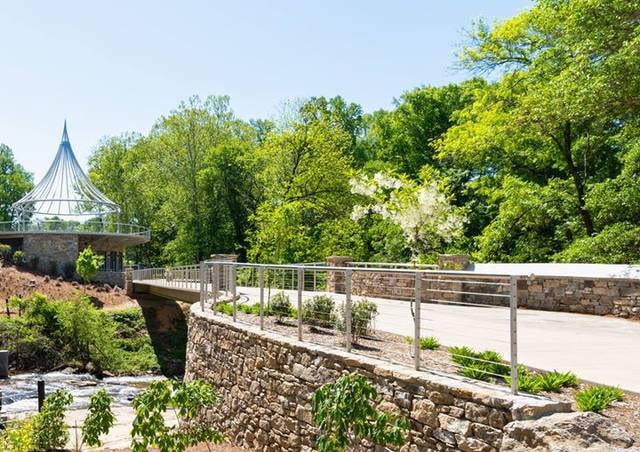
Park, Relax in park
Address: 24 Cleveland St, Greenville
The Children's Museum of the Upstate
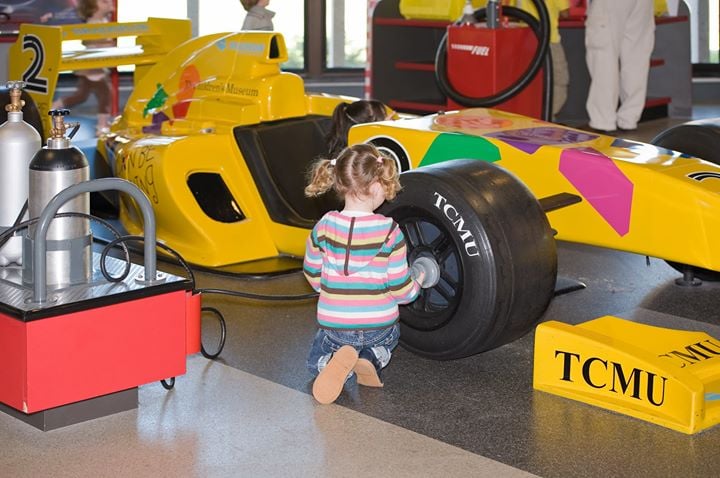
Museum, Children's museum, Science museum
Address: 300 College St, 29601-2015 Greenville (Central Greenville)
Wilkins House
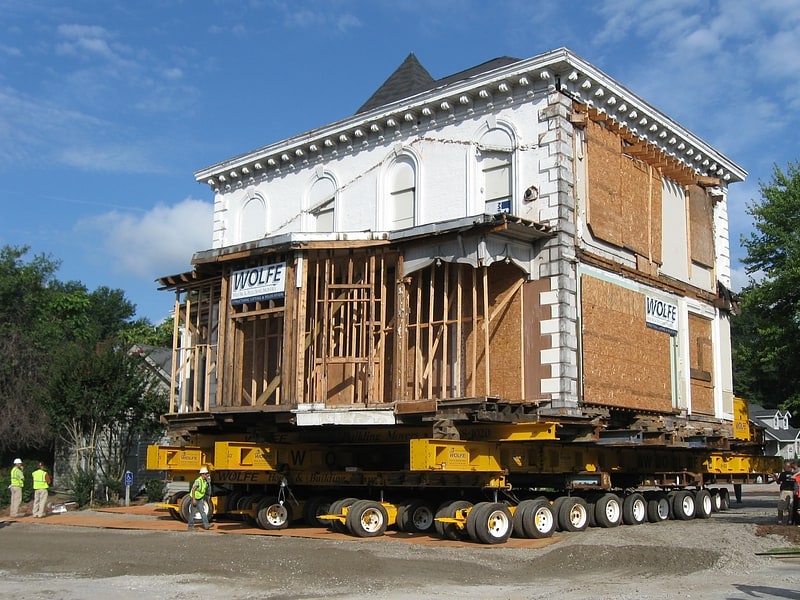
Museum in Greenville, South Carolina. The Wilkins House is a historic house in Greenville, South Carolina, built in 1878 by Jacob W. Cagle for merchant and capitalist William T. Wilkins. It was listed on the National Register of Historic Places on July 19, 2016.
Wilkins, a native of Spartanburg, South Carolina, engaged in the hardware business in Charleston and New York City prior to the Civil War, though he returned to South Carolina to fight for the Confederacy. By his death in 1895, Wilkins was "a large stockholder in nearly every manufacturing enterprise in Greenville."
In 1867, Wilkins married Harriet Dawkins Cleveland (1843–1930) of Greenville, a woman wealthy in her own right; and in 1875 they settled in her hometown. On 93 acres Wilkins built a two-story brick mansion in the Italianate style, reflecting their prominence in the business and social life of the community. An 1898 publication described the house as "the finest home of any man in northern South Carolina." The elegant interior, decorated in high Victorian style, included large crystal chandeliers, bas-relief carvings, and an impressive curved staircase. A conservatory on the north side was crowded with plants and flowers. Even after the death of her husband and only son, Mrs. Wilkins (thereafter always dressed in black) continued to play the grand lady, hosting luxurious dinner parties and being driven to social appointments in an enclosed carriage.
On her death in 1930, the house passed to a nephew who leased it to a funeral home, Jones Mortuary, which made superficial modifications to the interior but (among other exterior alterations, including painting the brick white) added a 1,200-square-foot chapel—enough change to make the structure ineligible for inclusion on the National Register. The funeral home closed in 1999, and for ten years the building was used for antique and specialty shops and as a wedding venue.
When the now four-acre property was sold to a buyer who wished to demolish the house and build a nursing home and assisted living center, real estate developer Neil Wilson bought the house, intending to preserve and restore it. With assistance from the Palmetto Trust for Historic Preservation and members of the Greenville community, the necessary $720,000 to move the house was raised in 2014. The funeral home additions were demolished, and on September 6, 2014, the approximately 750-ton house was moved a few blocks from Augusta Street to Mills Avenue—probably becoming in the process the heaviest structure ever moved in South Carolina.
Although buildings that have been moved are typically ineligible for the National Register, the Wilkins house was considered eligible on the basis of its architecture ("an excellent example of a high-style Italianate residence") and because it was a rare residential construction by Jacob Cagle. In 2017 the Wilkins House earned a State Preservation Award from the South Carolina Department of Archives and History.[25]
Address: 103 Mills Avenue, Greenville (South Side)
The Art Cellar
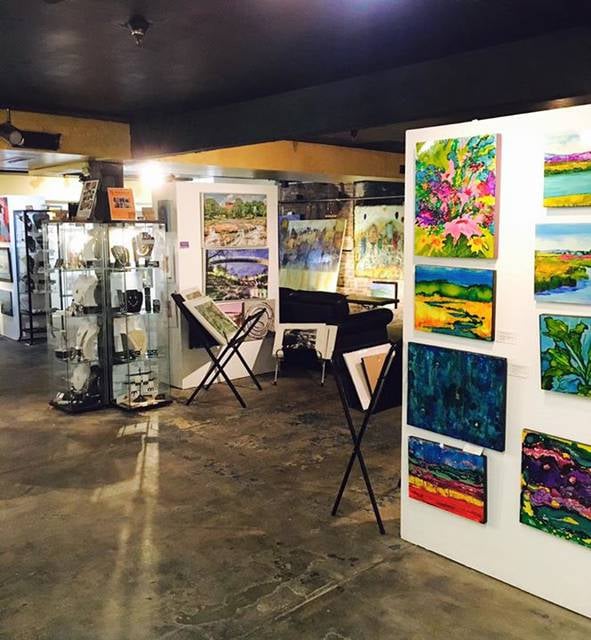
Museum, Art gallery, Shopping
Address: 233 N Main St, 29601-2166 Greenville (Central Greenville)
Parker High School Auditorium
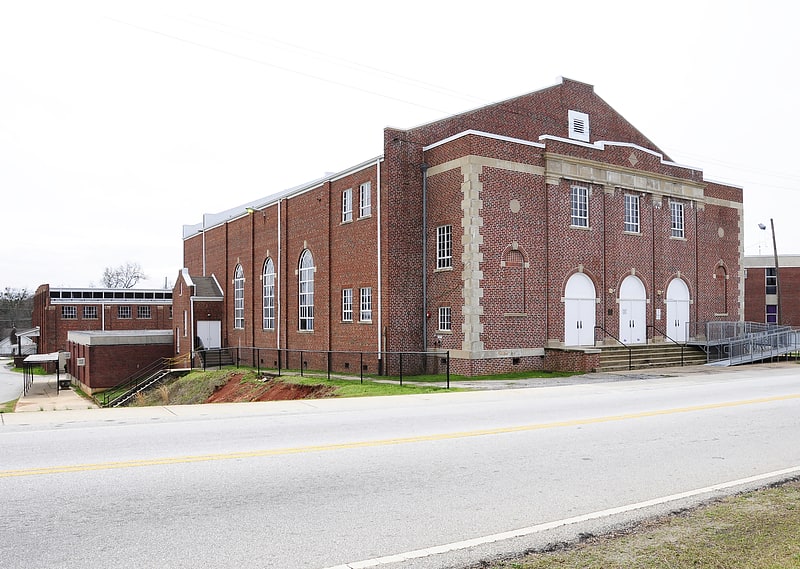
Parker High School Auditorium is a historic high school auditorium located at Greenville, South Carolina. It was built in 1938 with funding provided by the Works Progress Administration. It is a Classical Revival style 7500 square foot rectangular brick building with a front gabled roof. It is the last remaining building from the largest WPA school project in South Carolina.
It was added to the National Register of Historic Places in 1996.[26]
NOMA Square
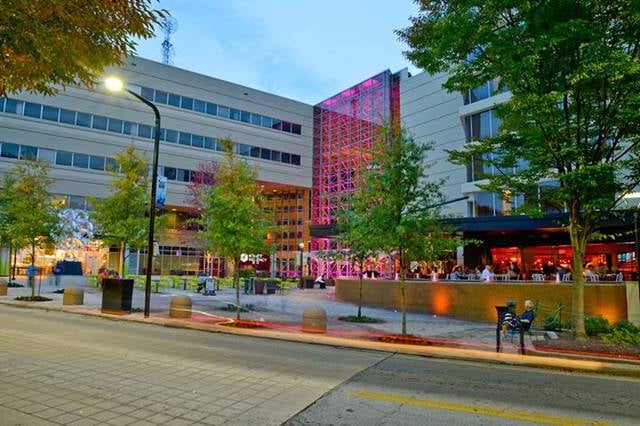
Square
Address: 220 N Main St, 29601-2161 Greenville (Central Greenville)
Davenport Apartments
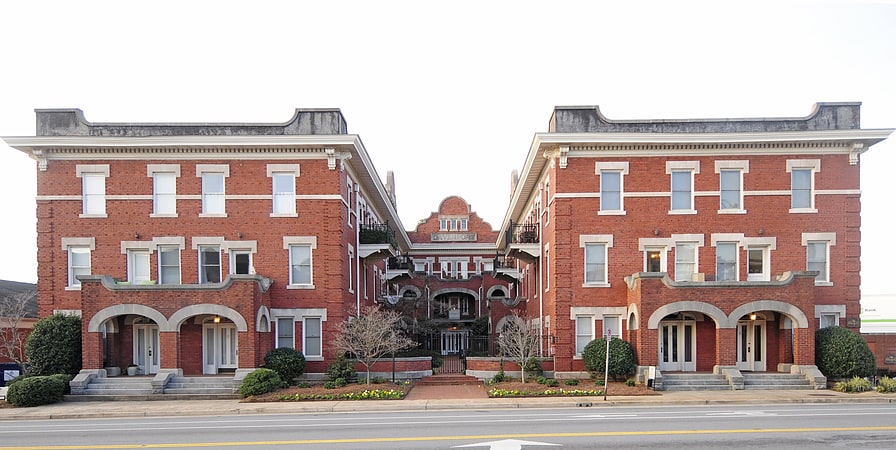
Davenport Apartments is a historic apartment building located at Greenville, South Carolina. It was built in 1915–1916, and is a three-story, "U"-shaped, brick building. It consists of a large rectangular section in the rear with two smaller wings that extend from the rear block to the street. The front façade features two one-story porches with stone elliptical arches and brick pillars.
It was added to the National Register of Historic Places in 1982.[27]
Address: 400 East Washington Street, Greenville (Central Greenville)
Isaqueena
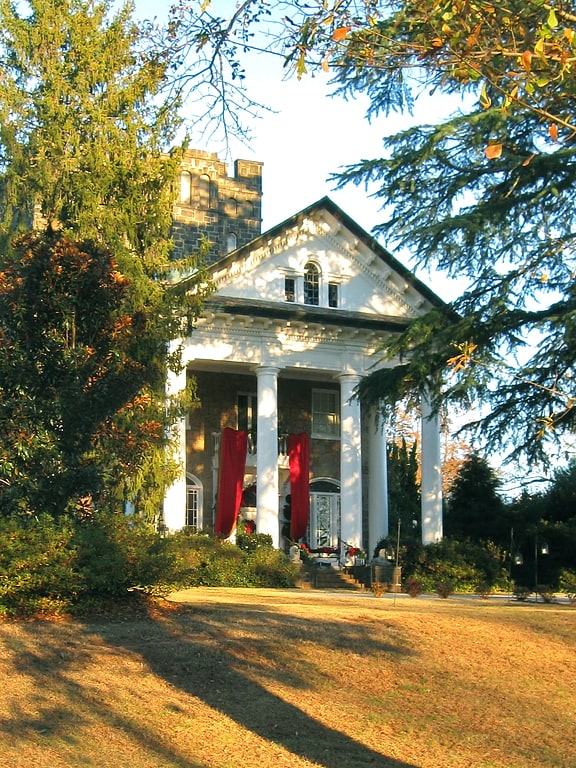
Wedding venue in Greenville, South Carolina. Isaqueena, also known as the Gassaway Mansion, is a historic house in Greenville, South Carolina, and the largest private residence in the Upstate. In 1982 it was listed in the National Register of Historic Places.
The 40-room house was built between 1919 and 1924 by Walter L. Gassaway, a banker and textile mill owner; his wife, Minnie Quinn Gassaway, designed the structure after taking a correspondence course in architecture. Mrs. Gassaway used the mansion itself for entertaining, including card parties and "entertainments in the music room and ballroom", but she also supervised the 110-acre estate that included a working farm and dairy.
As the National Register nomination notes, the three-story house is "an unusual example of eclecticism", blending neo-Gothic and neoclassical elements that include six Doric columns, a Palladian window, a castellated tower, two rooftop patios, and a massive porte-cochère. Stone for the random bond masonry was in part taken from a mid-nineteenth-century grist mill on the Reedy River owned by Greenville founder Vardry McBee.
Walter Gassaway died of a heart attack on June 4, 1930. The following year his widow abandoned Isaqueena for a smaller home (which she also designed) closer to downtown Greenville. Most of the estate was sold for house lots, and the mansion was converted into rental apartments. In 1959, the building was purchased by the fledgling Greenville Art Museum, which occupied it and built an art school building on the property. After the art museum moved to a purpose-built gallery on Greenville's Heritage Green in 1974, the mansion sat vacant until purchased in 1977 for use as a church and school. The building once again became a private residence in the 1990s, and it has since been maintained through rentals as a wedding venue.[28]
Address: 106 DuPont Dr, 29607 Greenville (Eastside)
Fountain Fox Beattie House
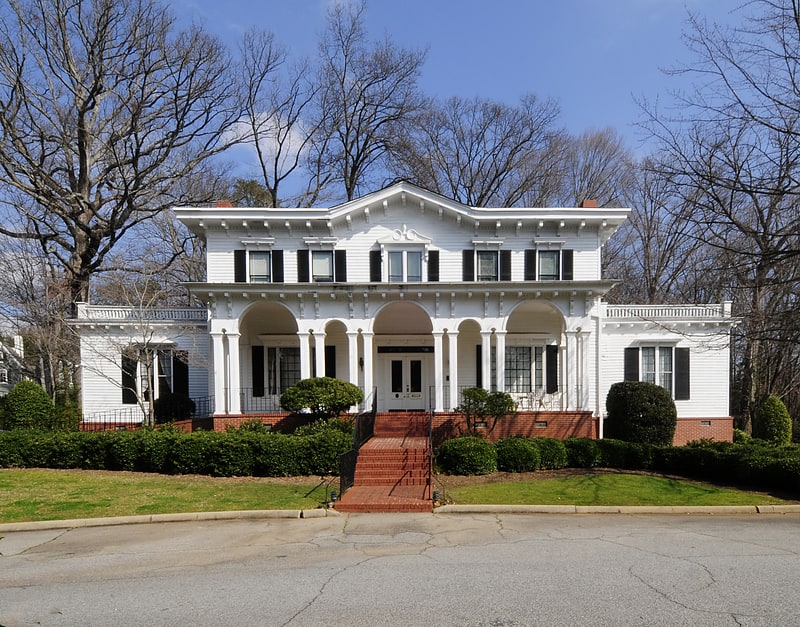
The Fountain Fox Beattie House, the home of Greenville Woman's Club from 1950 to 2014, is a historic house in Greenville, South Carolina. It was listed on the National Register of Historic Places in 1974.[29]